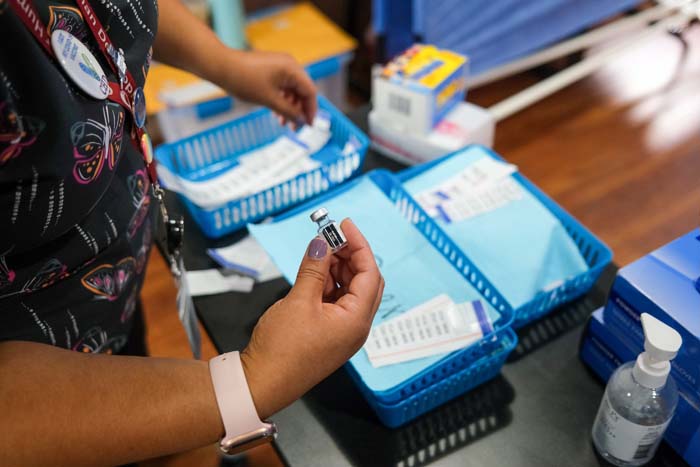Where you live has a dramatic effect on your risk of exposure to COVID-19, according to a mathematical model
Published 7:00 am Tuesday, August 24, 2021

- Immunization coordinator Nancy Davila holds up a vial of a COVID-19 vaccine at the Center for Human Development in La Grande on Friday, Aug. 6, 2021.
LA GRANDE — Where you live has a significant impact on your likelihood of contracting COVID-19, according to analytics from multiple mathematical tools developed to track regional data across the United States.
Trending
The website 19 and Me, developed by a team of engineers and data experts at Mathematica, allows users to input their ZIP code, age and behavioral habits, such as indoor dining and sports watching, and find out their risk of exposure to COVID-19.
In Eastern Oregon, the risk varies widely.
Grant County scored the lowest risk out of all Eastern Oregon counties: 1 in every 924 residents were infected with the virus between Aug. 2-16, according to the web tool (which accounts for unreported cases of infection). The site pegged Morrow County with having the highest risk, where 1 in every 39 residents were infected with COVID-19 during that time period.
Trending
For Morrow County, that means that in a group of 50 people, there is a 73% chance that at least one person is infected with COVID-19. In Umatilla County, the chance is 57%. In Wallowa County, it’s 54%, and in Baker County the risk is 64%. But in Grant County, the that percentage was down to 5.3%.
The individual risk of contracting COVID-19 each week is about 2.3% in Union County, according to the model.
In Grant County, that risk is 0.14% each week. The highest infected county, Morrow, registers an individual infection risk of 3.2% each week.
The tool also calculates an abstract risk assessment number that scores the severity of exposure and susceptibility to infection.
For an unvaccinated individual in Union County who doesn’t use a mask or follow Centers for Disease Control and Prevention hand washing, that risk factor assessment shows a score of 70, meaning that risk of exposure is high. That number drops to 31 if a person follows CDC guidelines for hand washing, mask use and vaccinations.
Vaccinations remain a safe and effective way to reduce the risk of hospitalization and symptoms of the virus, according to local, state and national experts.
In addition, the U.S. Food and Drug Administration gave full approval to the Pfizer-BioNTech vaccine for COVID-19 on Monday, Aug. 23, making it the first vaccine for COVID-19 to move past emergency use status.








